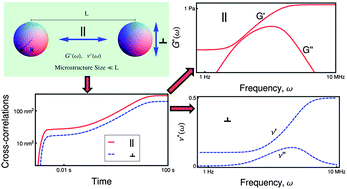The effects of compressibility, hydrodynamic interaction and inertia on two-point, passive microrheology of viscoelastic materials
Abstract
In two-point passive microrheology, a modification of the original one-point technique the cross-correlations of two micron-sized beads embedded in a viscoelastic material are used to estimate the dynamic modulus of a material. The two-point technique allows for sampling of larger length scales which means that it can be used in materials with a coarser microstructure. An optimal separation between the beads exists at which the desired length and time scales are sampled while keeping an acceptable signal-to-noise-ratio in the cross-correlations. A larger separation can reduce the effect of higher-order reflections, but will increase the effects of medium inertia and reduce the signal-to-noise-ratio. The modeling formalisms commonly used to relate two-bead cross-correlations to the dynamic modulus and the complex Poisson ratio neglect inertia effects and underestimate the effect of reflections. A simple dimensional analysis suggests that for a model viscoelastic solid there exists a very narrow window of bead separation and frequency range where these effects can be neglected. In a recent work [Phys. Fluids, 2012, 24, 073103] we proposed an analysis formalism that accounts for medium inertia and high-order hydrodynamic reflections and therefore significantly increases the versatility of the two-point microrheology technique. In this paper we extend our analysis to compressible viscoelastic solids. There has been a recent interest in using two-point microrheology to measure the complex Poisson ratio of


 Please wait while we load your content...
Please wait while we load your content...